- Home
- Itineraries
- The-Three-Basilicas
- Basilica of Saint Sebastian
Description
History of the building
Between the late 16th and early 17th century, the cult of St. Sebastian invoked as a protector against the plague was led by a brotherhood in a small 15th century church now dedicated to St. Anthony of Padua. In 1577, when a terrible epidemic struck the territory of Aci , the statue of St. Sebastian was kept on the altar to receive the prayers of the people. The city remained immune to the contagion and the devotees, believing in the intercession of the Saint, increased to the point that they could not be welcomed in the church anymore. The rectors of the brotherhood then decided to build a monumental church, a basilica with three naves. To raise the money needed to build it they used the proceeds of existing annuities and legacies of wealthy citizens and members of the brotherhood.
The construction work began in 1608 and continued until 1658. The nave of the basilica was enriched with frescoes about the life of the Saint made by Venerando Costanzo while the choir was painted by Baldassare Grasso.
On 11th January 1693 a terrible earthquake (approximately 60.000 victims in the Val di Noto), caused the collapsing of the choir, the sacristy and the oratory. An inscription on the right side of the façade, reminds that the reconstruction took place between 1695 and 1699, that is in just four years.
In 1705, the rectors of the church started the building of the façade. It was completed in 1715. When it was decided to paint again the chorus, both Venerando Costanzo and Pietro Paolo Vasta aspired to obtain the assignment of the work. Vasta asked the Royal Court to organize a public competition with which to determine who should paint the frescoes. The two artists were given the task to decorate the lunettes of the transept. The victory went to Vasta who, in 1732, signed a contract of 150 ounces with the governors of the church committing himself to paint the frescoes in the choir and the vault with scenes from the life, martyrdom and glory of the Saint.
Between 1899 and 1901 Francesco Mancini performed the encaustic frescoes of the two sides of the transept.
The Façade
The construction work on the façade of the basilica, which is a perfect example of the late Sicilian Baroque, began at the end of 1705. Designed by the Acese Angelo Bellofiore it develops, closed between two ashlar-worked pillars, on three orders. The main entrance is decorated by columns with acanthus leaves and anthropomorphic figures.
Next to the portal there are two niches containing the statues of St. John the Baptist and St. Christopher left to right. Then, there are two pairs of pilasters that frame the two side entrances. Between the first and the second order is a basement divided into two zones: the lower houses fourteen angels holding up garlands of flowers and fruits, a true hymn to life; the upper one has four pairs of monstrous heads whose function was that of keeping off evil, mainly represented by the natural disasters that have always tormented the land of Aci. The second order has a large window topped by a broken pediment and flanked by the statues of St. Gervase and St. Lawrence to the left and St. Vitus and St. Protasius on the right.
At the end of the third order are the statues of Saints Cosma and Damian, brothers and doctors.
In 1742, Alfio Samperi and Francesco Flavetta built the loggia planned to keep the bells of the basilica. Designed as an integral part of the façade, this innovation will become a feature of the 18th century baroque architecture of the Val di Noto.
In the same year the exterior of the basilica was equipped with an atrium and a balustrade embellished with ten statues, designed by Pietro Paolo Vasta and made by Gian Battista Marino, depicting characters from the Old Testament. Between 1847 and 1848 Salvatore Paradiso made the artistic gates that close the atrium.
Designed by Gustave Doré in 1893 in Naples the bas-reliefs in bronze on the central door show episodes from the Bible. Recently the UNESCO declared the basilica "monument messenger of a culture of peace."

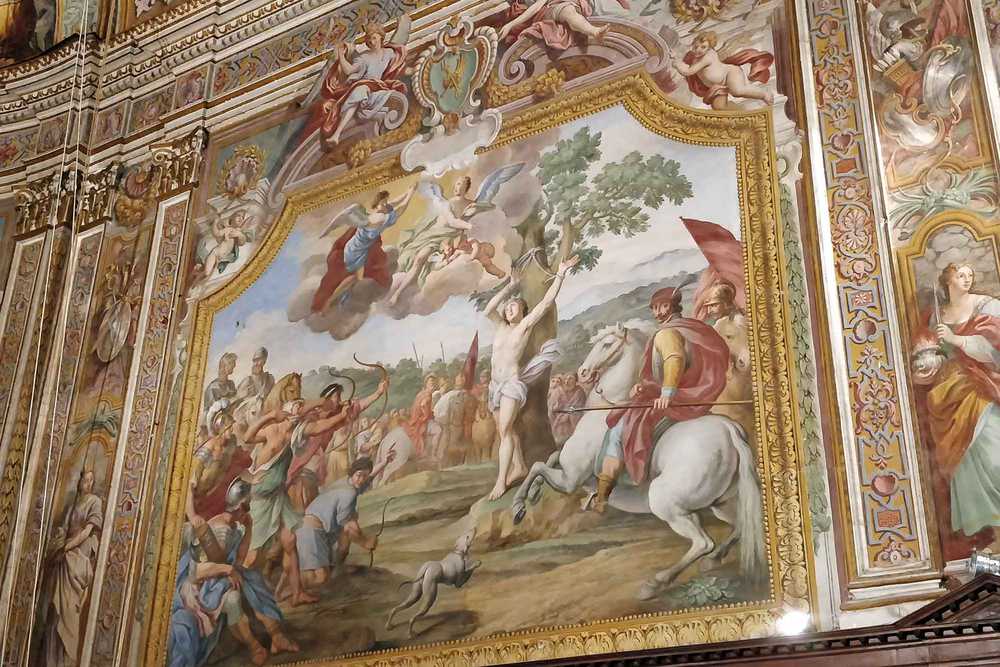
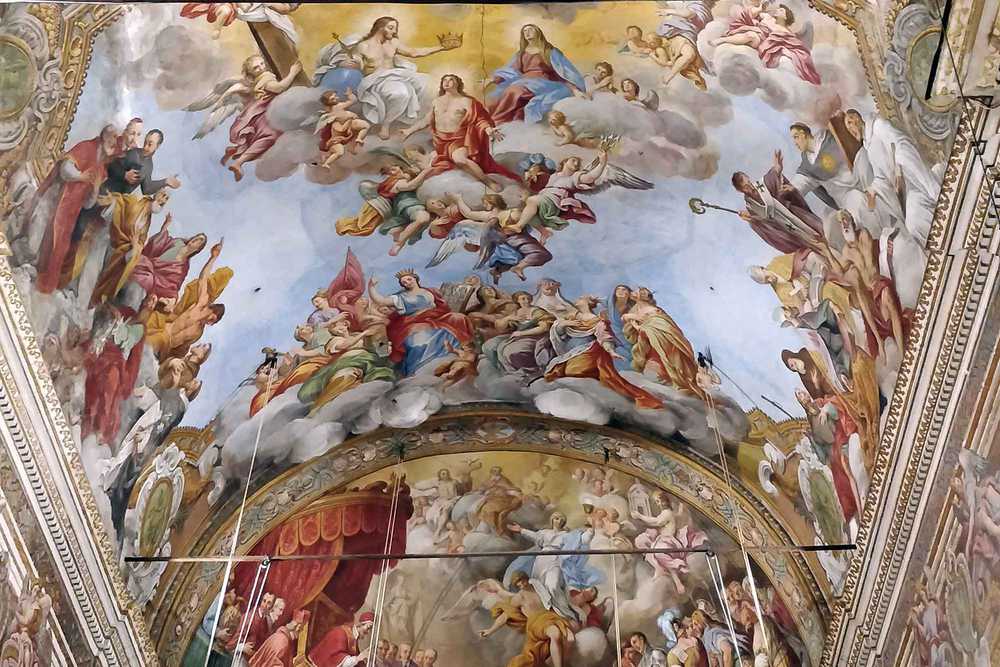
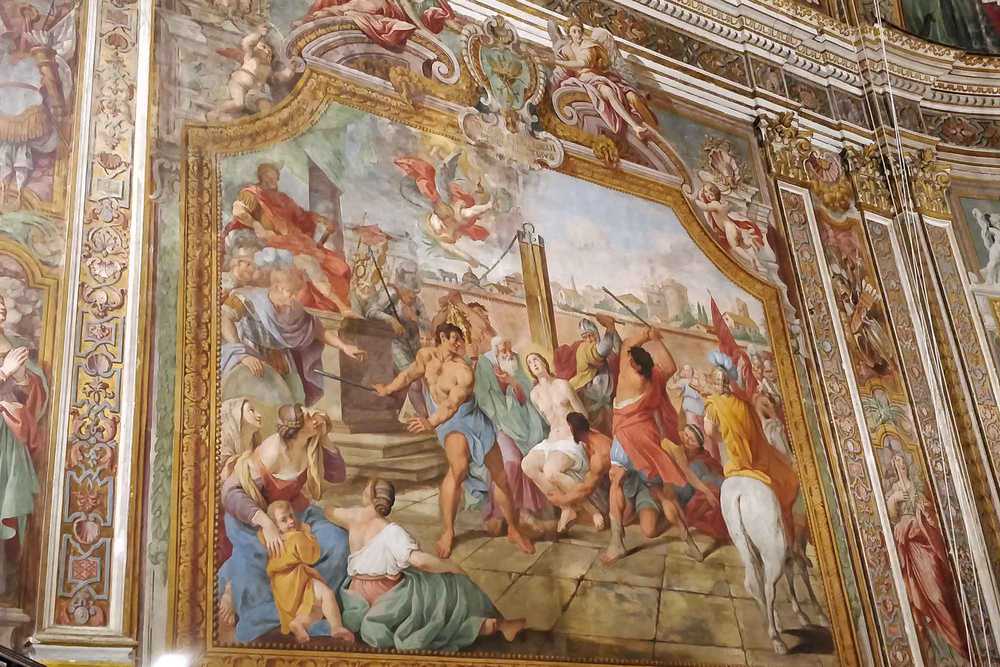
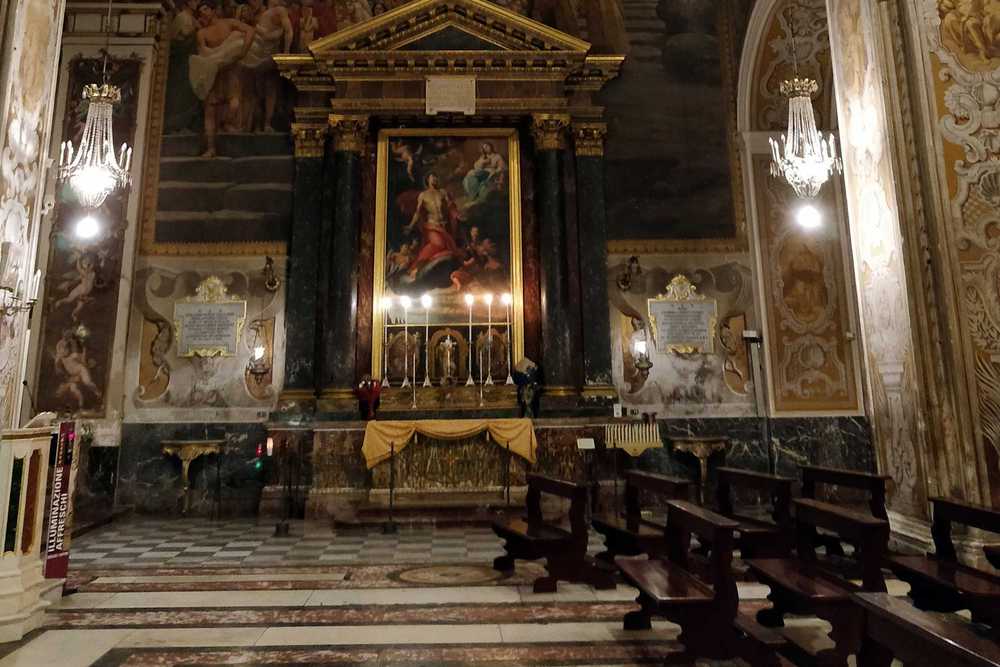
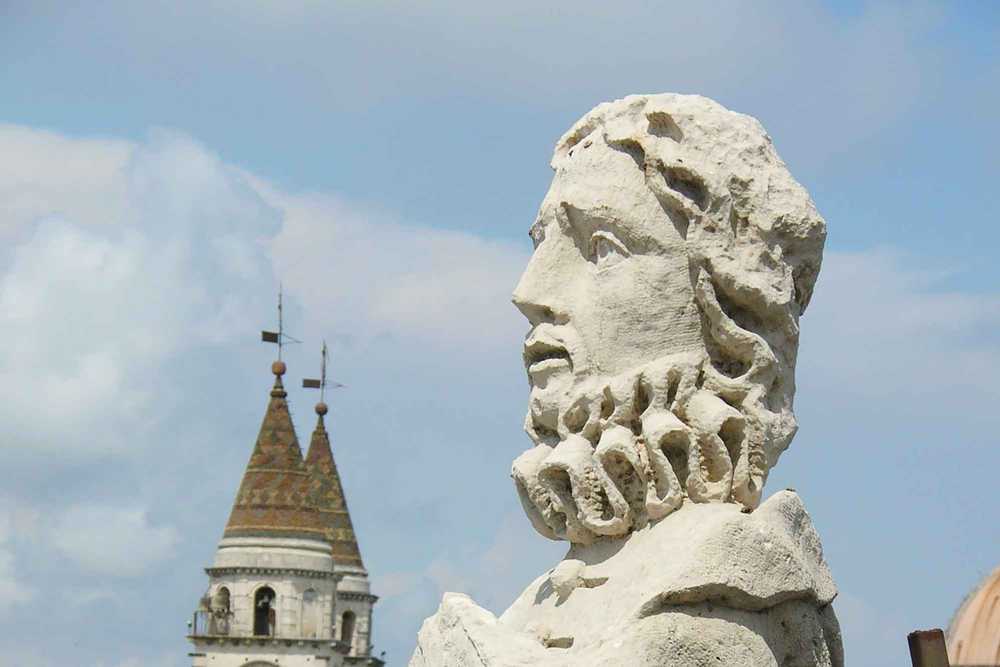
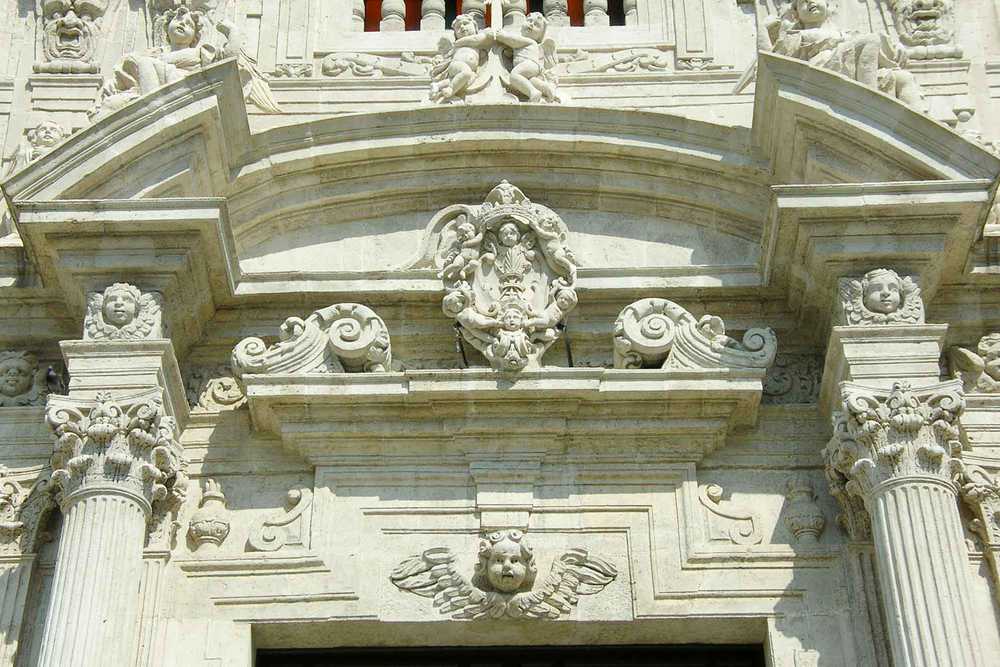
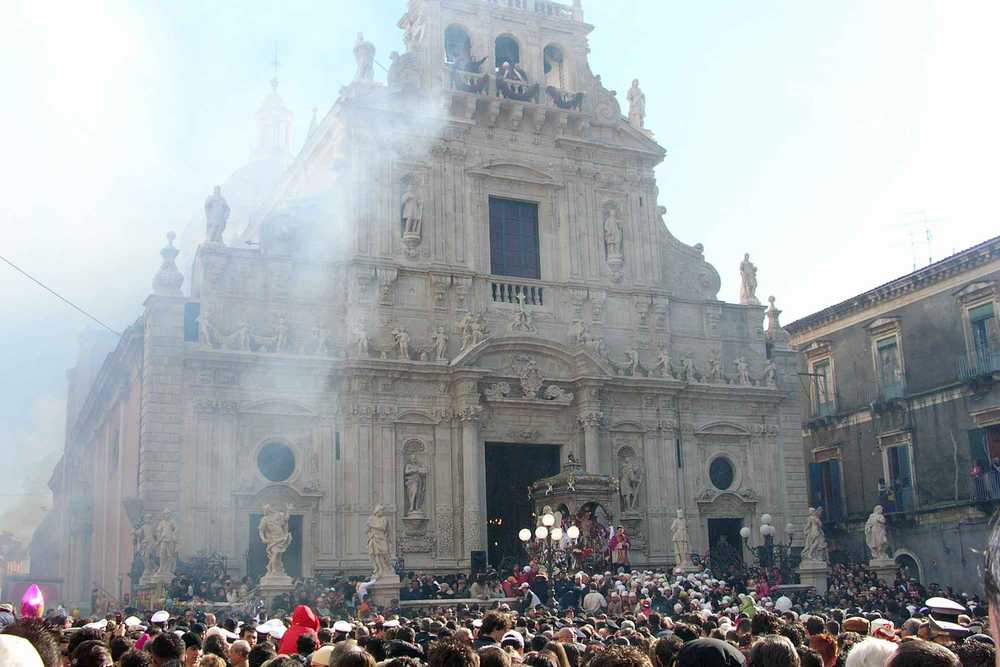
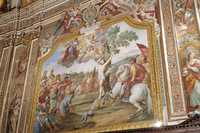
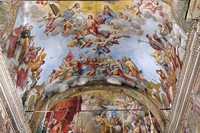
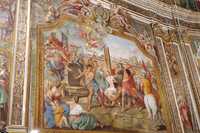
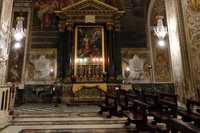
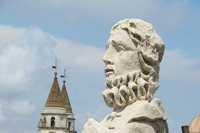
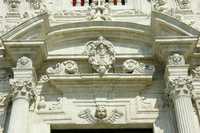
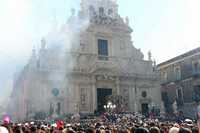
 Incoronazione della Vergine e Santi
Incoronazione della Vergine e Santi Anime del Purgatorio
Anime del Purgatorio La Madonna e i santi Gaetano, Francesco di Sales, Lucia
La Madonna e i santi Gaetano, Francesco di Sales, Lucia Ecce Homo
Ecce Homo La Pietà
La Pietà Transetto
Transetto Presbiterio
Presbiterio Cappella di san Sebastiano
Cappella di san Sebastiano Santi Marco Evangelista, Girolamo e Liborio
Santi Marco Evangelista, Girolamo e Liborio Santi Cosma e Damiano
Santi Cosma e Damiano San Giovanni Battista
San Giovanni Battista Museo Basilica San Sebastiano
Museo Basilica San Sebastiano


